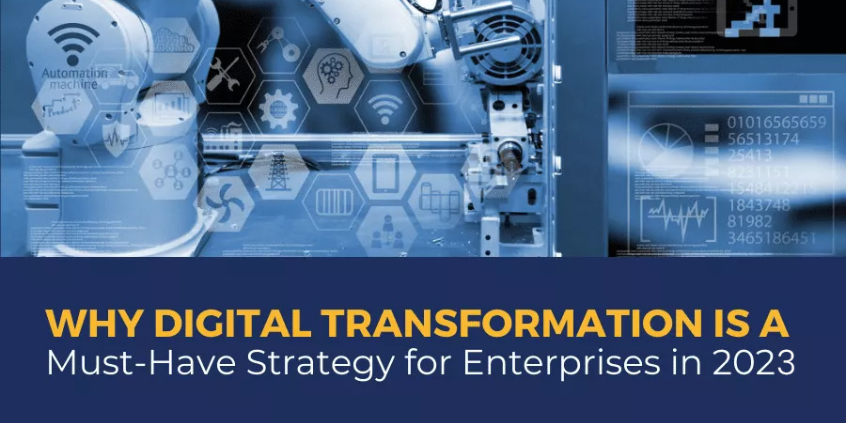In the list of scenarios and instances that feel nostalgic today, we could clearly add visiting the bank. Today, visits to banks are only limited to circumstances that involve paperwork for loans, approvals & statements that require physical verification. Otherwise, pretty much every banking-related action can be carried out through apps or online portals. Digital transformation in banking has made our lives simpler instances of stepping out and personally visiting a bank.
Today, we have IoT-enabled banking services, tap and chip-based cards with added encryptions & app-based payment systems. From the elderly to the young population, banking has become accessible, banking functions more understandable and services more streamlined. All thanks to digital transformation solutions.
With that said, not all banks and NBFCs have implemented a digital transformation strategy in their banking operations. A lot of banks still operate on obsolete technologies today. Their strategies are so weak that they end up complicating processes rather than simplifying them.
This gives rise to concerns like unsecure connectivity, poorly encrypted websites or apps, lenient data management systems. To make this statement more credible, let’s understand that according to a report shared by Boston Consulting Group, 86% of the banks out there revealed that their digital infrastructure was poor or unstable to have any digital interactions with their customers.
This is true as a lot of ventures still don’t have a well-defined goal with digital transformation in financial services. If you run one such venture or work for a bank with obsolete strategies, this write up is specifically for you.
Here, we breakdown the approaches to developing a fool-proof digital transformation strategy for the banking sector.
How Digital Transformation in Banking Helps To Become a Market Leader
1. Think Like A Customer
Digital transformation in financial services is complicated. Agreed. However, this is not the case when you switch roles and begin to think like your customers. From a business perspective, you are thinking about incorporating the latest technologies, updating your tech stack, choosing vendors and more. For your customers, however, none of this matters.
Also Read : Top Five Benefits of Digital Transformation Solutions for Manufacturing
All they want are solutions that can let them complete transactions in minimal clicks, send or get access to their accounting information & statements, receive personalized loans and offers and most importantly a quick customer service associate to connect to during times of distress.
So, all your efforts into developing a portal, an application or an enterprise software suite should stem from your customers’ requirements, thought processes, tech affinity and learning curve. Despite customer journeys being distinct, functionalities are all going to be the same. Start by understanding the pain points of your customers, come up with solutions & chart their journeys and offer unbiased and ultimate online banking solutions. Digital transformation solutions always operate from the ground up.
2. Structural Implementation
Digital transformation is not completely automated. It is still hybrid, where advanced computing concepts like artificial intelligence, machine learning, Big Data, analytics and more come together with manual interventions to offer insights and solutions to customers.
With the understanding that banking solutions are hybrid, work on how you could go about implementing it across your diverse market segments.
Structural implementation is key to offering airtight resolutions to your customers’ conflicts. For instance, your customers in urban or suburban regions might be comfortable with automated solutions like chatbots and voice-assisted support modules. However, your customers in the rural regions would want to talk to an associate or visit the nearest bank and get their problems resolved. So, implement your tech-driven solutions based on target audience demographics to ensure digital transformation in financial services is more meaningful and aligned.
3. Data Generation And Management
When you talk about digital transformation in banking, what is inevitable is data and its allied processes like generation, storage and processing. Some of the most confidential information is embedded in the data that could be abused or misused. That’s why your digital transformation solutions ambitions should prioritize data management practices and policies.
Ensure your services and tech stack meet industry standards for encryption, you deploy the most advanced and foolproof servers and server architectures, have predictive solutions to predict breaches and compromises, GDPR and other global data protection laws and compliances, well-trained staff that understands data privacy and security and more.
The banking finance sector is the most vulnerable to breaches that is exactly why you should have airtight solutions. With an ambitious digital transformation in banking comes equally sound responsibility. Even a slight compromise could lead to losses, bad reputation that could prove expensive to your bank or venture.
Wrapping Up
So, these were the three crucial factors you need to consider when bringing in digital transformation solutions into your bank. During the initial stages, there are more hurdles and hiccups than rewards. However, once these are strategically resolved, the ecosystem becomes empowering to all the stakeholders involved.





